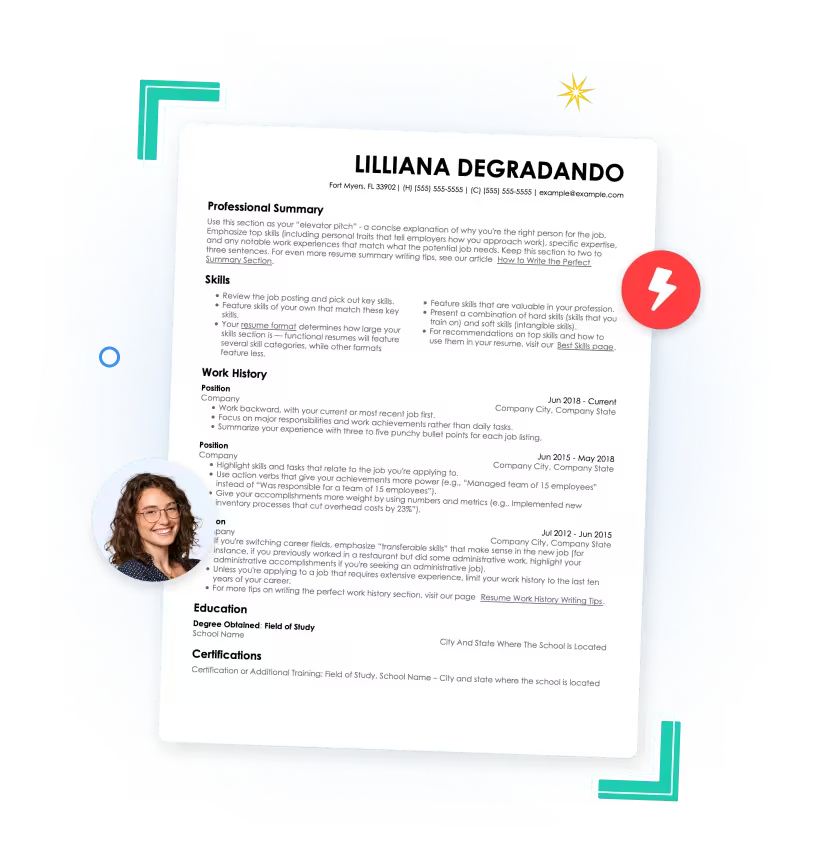Whether you are right out of college hoping for a first job or a seasoned veteran looking for a step up the ladder, a well-written resume is your greatest ally in your job search. Unfortunately, many good job candidates struggle to craft a resume that gets them an interview. This doesn’t have to describe you, however, if you take a look at our resume samples. These samples have great ideas you can borrow and adapt, including suggestions for experience you could list, skills you might have, even formatting and fonts to use. A great resume gets your name onto more “please interview” lists and your foot in more doors. Get started now by studying our engineering resume samples and additional writing tips.
Engineering Resume
1. Civil Engineer Resume Sample
1. Civil Engineer Resume Sample
WORK EXPERIENCE
Civil Engineer
Duffield Associates
Philadelphia, PA
Feb. 2012 – present
- Manage and maintain construction sites in Philadelphia for compliance with project design
- Ensure projects conform to safety regulations and follow OSHA guidelines
- Design public projects including curbs, ramps, and walkways for the new airport terminal
- Inspect sites and test soil for appropriate use and foundation material
- Receive commendation for 15% reduction in work accidents at monitored construction sites
2. Industrial Engineer Resume Sample
2. Industrial Engineer Resume Sample
WORK EXPERIENCE
Industrial Engineer
IET, Inc.
Toledo, OH
Oct. 2014 – Present
- Devise and implement quality control objectives to resolve production issues
- Design and establish a sequence of operations that improved efficiency by 12%
- Estimate the cost of design changes on new product line
- Use Workcell simulation software to evaluate production systems
- Maintain electronic database of studies, methods, and work practices
- Study the production process to eliminate waste from the manufacturing line
3. Mechanical Engineer Resume Sample
3. Mechanical Engineer Resume Sample
WORK EXPERIENCE
Mechanical Engineer
Lockheed Martin
Grand Prairie, TX
June 2010 – Present
- Perform analysis using FEMAP/ NASTRAN, interpret results, and create stress reports
- Develop and maintain analysis models for product and prototype testing
- Interact with manufacturers and suppliers to successfully deliver hardware 7% under budget
- Create solid models using Creo 2.0
- Review requirements, e.g., systems, stress, thermal, etc., and apply them to the model
- Develop and monitor all aspects of hardware production, including quality and safety
4. Project Engineer Resume Sample
4. Project Engineer Resume Sample
WORK EXPERIENCE
Project Engineer
COP Construction LLC
North Salt Lake, UT
Jan. 2011 – Present
- Track production costs, create and maintain production records of all projects
- Oversee contractual insurance and indemnification requirements
- Purchase job materials and special tools and schedule the rental of large equipment
- Insure compliance with all contractual requirements unique to each job
- Obtain permits and permissions from local government for each project
- Convert paper records to digital cloud for a 4% reduction in costs

